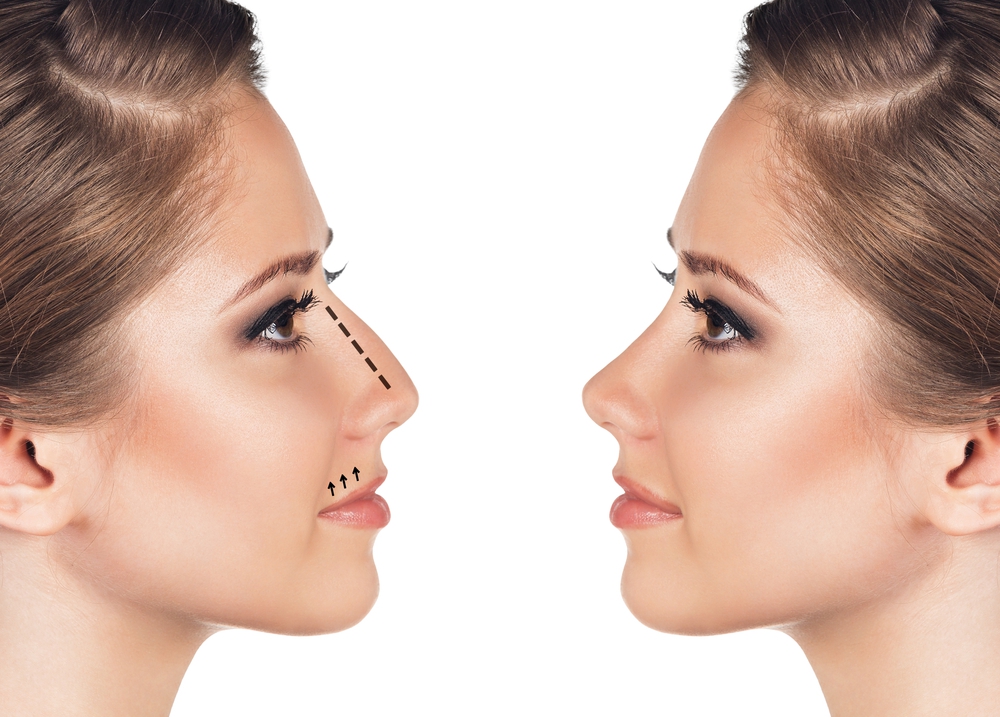Rhinoplasty

Rhinoplasty is a plastic surgery procedure for correcting and reconstructing the form, restoring the functions, and aesthetically enhancing the nose and achieving the harmony of the face. It can aslo be conducted to resolve a respiratory impediment (Septoplasty, turbinectomy, polipectomy, adenoidectomy).
The operation involves modeling cartilage-and-bone support framework and soft tissues of the nose by the surgeon’s manipulations. Currently, rhinoplasty is one of the complex operations in aesthetic medicine, as the nose is the most prominent part of the face and it is almost impossible to hide nose defects. The rhinoplasty should be conducted by the surgeon who has extensive experience in the field. It is widely known that Georgia represents an endemic zone for big and Roman type of noses. Among the Soviet countries Georgia was the first to start offering nasal operations, which provided the Georgian surgeons with a strong history and experience in rhinoplasty. Through the observation of individual cases, our surgeons were able to introduce important novelties in the techniques of rhinoplasty, allowing us to achieve consistently improved outcomes. We approach each patient individually because there are no standard nasal shapes and face proportions. In each case our goal is to find a nasal shape that fits well to the facial proportions. It is also known that nasal shape can be used as an indicator of a particular character, therefore we also consider the patient’s character. The purpose of the operation is not only the making of the beautiful shape of the nose, but its harmonious alignment with the face of the patient. At the same time the nose should look natural and should have no indications of being operated on.
Indications for primary rhinoplasty are aesthetically unappealing nasal shaped – Roman nose, wide, narrow, double or asymmetric tip, and other congenital or acquired deformations. By changing the shape of the nose, you can reach harmonious facial appearance. Indications for primary rhinoplasty are also deformity in the cartilaginous septum of the nose, hypertrophy of the sidewalls, polyposis and respiratory impediments caused by adenoids. Repeated Rhinoplasty may occur is the primary surgery was not successful.
The operation is conducted using intravenous anesthesia and it lasts for 1.5-5 hours. Incisions are hidden inside the nose, or in an open procedure, an incision is made across the columella, the narrow strip of tissue that separates the nostrils. There is no visible scar after the nasal operation. Through these incisions, the soft tissues that cover the nose are gently raised, allowing access to reshape the structure of the nose that will harmoniously fit the face. In case of respiratory impediment, the corrective surgery of cartilaginous septum of the nose takes place (septoplasty), or resection of the turbines (turbinoctomy), as well as polipectomy and adenoidectomy. In case of repeated rhinoplasty, sometimes it becomes necessary to use the transplants, which allows restoration of the nasal bone structure.
Post Operation Rehabilitation
After your procedure is completed, a splint, internal tubes or packing will likely be placed inside your nose for 3-6 days depending on the type of operation (aestheric rhinoplaty, septoplasty, reconstructive rhinoplasty. We use new type of packing that is easy and painless to remove. A splint or bandages is placed on the outside to support and protect the new structures during initial healing during 5-11 days. The patient is released for the hospital the second day after the operation, but remains on outpatient observation on the second, third and sixth days of the operation. The patient might experience loss of the sensitivity on the top of the nose. Patients can start driving on the third day from the operation. Full physical workload is allowed in 2 weeks from the operation. Swollen and bruised areas start to disappear in 1-2 weeks. It is not recommended to wear glasses for 2 months. The nose gets into its final shape 6-12 months from the operation, though the patient does not visibly notice small changes after the 3 weeks. Individual approach to our patients and active observation during the post-surgery period allows us to achieve consistently positive outcomes.





